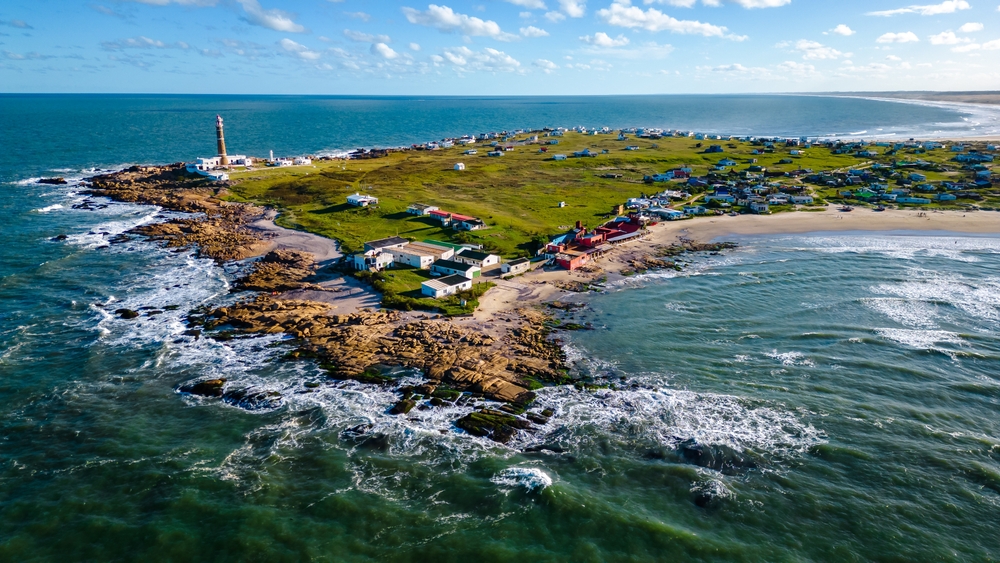Isla de Flores Overview
Isla de Flores, or “Island of Flowers,” is a small Uruguayan island located in the Río de la Plata, approximately 21 kilometers (13 miles) east of Punta Carretas, Montevideo.
Covering a modest area, the island and its surrounding waters, extending two nautical miles, were designated as a national park on February 26, 2018. The island’s name dates back to Easter Sunday in 1527, when explorer Sebastián Gaboto named it “Flores” in reference to “Pascua Florida,” the Spanish term for Easter.
The island’s terrain is characterized by rocky shores and sparse vegetation, typical of riverine islands in the region. One of its most prominent features is the historic lighthouse, which began operation in 1828. Standing at 37 meters (121 feet) tall, the lighthouse emits two flashes every 10 seconds and remains under the jurisdiction of the Uruguayan Navy.
Historically, the island was abundant with South American fur seals, attracting sailors in the early 19th century who hunted them for their pelts. Today, while the seal population has diminished, visitors might still observe various seabirds and occasional marine life along the coast.
A notable attraction on Isla de Flores is the aforementioned lighthouse, often referred to as “the world’s most expensive lighthouse” due to its historical significance and the 1819 treaty associated with it. The island’s rich history, combined with its natural beauty, makes it a point of interest for those visiting the Montevideo area.
Visitors can explore the island’s historical sites, including remnants from its past maritime activities. Guided tours are available, offering insights into the island’s history, its lighthouse, and the surrounding ecosystem. The best time to visit is during the summer months, from December to March, when the weather is most favorable.
In terms of conservation, the establishment of Isla de Flores as a national park reflects Uruguay’s commitment to preserving its natural and historical heritage.
Efforts have been made to protect the island’s ecosystems and historical structures, ensuring that both the natural environment and cultural landmarks are maintained for future generations. The management of the park focuses on balancing public access with conservation needs, promoting sustainable tourism practices to minimize human impact.
In summary, Isla de Flores offers a unique blend of historical significance and natural beauty. Its proximity to Montevideo makes it an accessible destination for those interested in Uruguay’s maritime history and coastal ecosystems. The island’s designation as a national park underscores its importance and the ongoing efforts to preserve its unique character.











































































